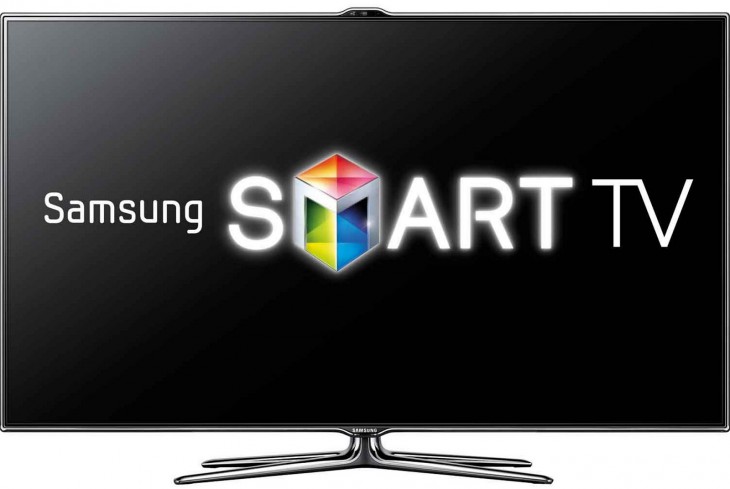
Yesterday we ran a story on Samsung’s Smart TVs supposedly listening to everything that happens in our lounge rooms and reporting it to the thought police, something reminiscent of 1984. You may detect a hint of sarcasm there. Mainstream media went into an absolute meltdown over this, with so called privacy experts and internet law professors coming out of the woodwork like rats from a sinking ship. The headline was that Samsung’s Smart TV voice recognition feature always listens, and Samsung’s privacy policy did nothing to dissuade people from the (somewhat preposterous) idea that somehow our conversations were being recorded, stored, and had the potential for misuse.
Anyhow, Samsung has taken to its own platform to respond to these concerns, and frankly its response is pretty informative, and aligns with what we hypothesised yesterday. Rather than mince words, I think it’s important to quote Samsung directly here:
Some Samsung Smart TVs offer voice recognitions functions. These functions are enabled only when users agree to the separate Samsung Privacy Policy and Terms of Use regarding this function when initially setting up the TV. Apart from initial setup, users are given the choice to activate or deactivate the voice recognition feature at any time.
Voice recognition takes place in two ways:
The first is through an embedded microphone inside the TV set that responds to simple predetermined TV commands such as changing the channel and increasing the volume. Voice data is neither stored nor transmitted in using these predetermined commands.
The second microphone, which is inside the remote control, requires interaction with a server because it is used for searching content. A user, for example, can speak into the remote control requesting the search of particular TV programs (ex: “Recommend a good Sci-Fi movie”). This interaction works like most any other voice recognition service available on other products including smartphones and tablets.
To me, this makes things perfectly clear. There are, in essence, two types of voice recognition in play. The first, which is “always on”, listens only for pre-determined commands, such as volume up or changing channel. It doesn’t send anything to a server in order to work (and the implication is that it may well work when the TV isn’t connected to the Internet).
The second voice recognition method, which does require server communication, requires the use of the remote control (which has a microphone) to capture your voice, transmit it to a third party for conversion to text, and return to the TV so it may process your command.
Samsung went on to clarify their privacy terms and conditions, which complete the explanation of how the voice recognition process works:
If you enable Voice Recognition, you can interact with your Smart TV using your voice. To provide you the Voice Recognition feature, some interactive voice commands may be transmitted (along with information about your device, including device identifiers) to a third-party service provider (currently, Nuance Communications, Inc.) that converts your interactive voice commands to text and to the extent necessary to provide the Voice Recognition features to you. In addition, Samsung may collect and your device may capture voice commands and associated texts so that we can provide you with Voice Recognition features and evaluate and improve the features. Samsung will collect your interactive voice commands only when you make a specific search request to the Smart TV by clicking the activation button either on the remote control or on your screen and speaking into the microphone on the remote control.
What we have here is the third party identified (Nuance Communications, Inc, who are well known in the voice recognition field), and a detailed explanation of precisely when the voice recognition system is active (i.e. listening to you). In other words, to activate the system, you need to make “a specific search request […] by clicking the activation button on the remote, or on the screen, and speaking into the remote control”.
This hardly seems like the scenario where any conversation in the living room might be detected and sent up to the cloud for processing, unless you choose to activate the voice recognition by hand or by remote first. If you did that, in my suggestion, you’d simply be a bit daft.
Just goes to show, the media loves a good story, regardless of how accurate it may or may not be.





The problem, Chris, is it required the MSM beatup to force Samsung to come clean about what they’re doing, how and why and with which third party.
If Samsung had done the RightThing the outset, by putting these details up front from the start, the fearmongers would have had no oxygen for their stories.
I’m not worried. I’ll just put another layer of aluminium foil around my head from now on.
You sir, have made my day.
NSA is American. Samsung is South Korean. I don’t think it works quite like that. But if it did, I have 2 tablets, 2 phones, a TV, computer all in my house that can listen to me.
I think this response article is a bit incomplete.
Just because the feature isn’t “activated” to allow your voice to perform an action doesn’t mean the NSA can’t remotely activate the listening functionality for their own purposes. They will and do if it so pleases them, end of story. The mere fact that you’re placing a listening device in your living room, whether you activate it or not, is the risk.
Visitor is correct. Remember the LG ,I think, smart tv’s that were returning information via the internet without permission. Remember the hacking of cameras in laptops to view inside your houses. NSA and hackers would iove access to microphones in the house.
Trust no-one. Trust nothing.